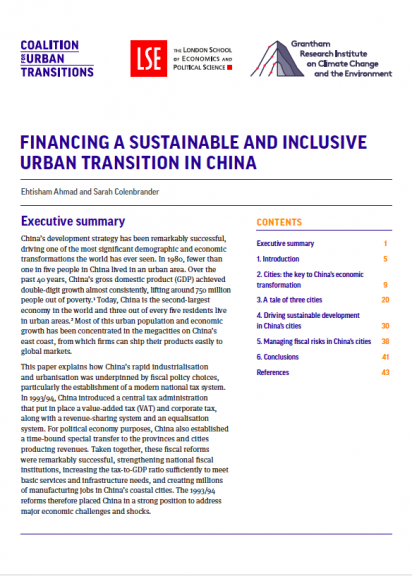Financing a Sustainable and Inclusive Urban Transition in China


Through case studies of three cities – Guangzhou, Nanchang and Jieshou – this new paper identifies four key fiscal reforms for cities that could help secure China’s economic prosperity and improve the quality of life of its residents, while tackling the climate crisis.
China’s development strategy has been remarkably successful, driving one of the most significant economic transformations the world has ever seen. Currently three out of every five of China’s residents live in urban areas, with most population and economic growth concentrated in the megacities on the east coast.
Fiscal reforms have driven China’s development. They have strengthened national fiscal institutions, increased the tax-to-GDP ratio sufficiently to meet basic services and infrastructure needs, and created millions of manufacturing jobs in China’s coastal cities.
At the same time, inequality in China has increased and local governments have vast spending responsibilities, with many turning to land sales and debt-financing using off-budget local financing vehicles to borrow. The concentration of production in coastal megacities has exacerbated severe pollution and environmental degradation.
Given their central role in the economy, cities are at the heart of the challenge ahead. China needs to transform its established urban areas into more compact, connected and clean cities while simultaneously steering future urbanisation towards sustainable hubs in its interior.
Fiscal policy has a crucial role to play. This paper recommends that provincial and city governments should:
This paper was created in partnership with the Grantham Research Institute at the London School of Economics and Political Science.